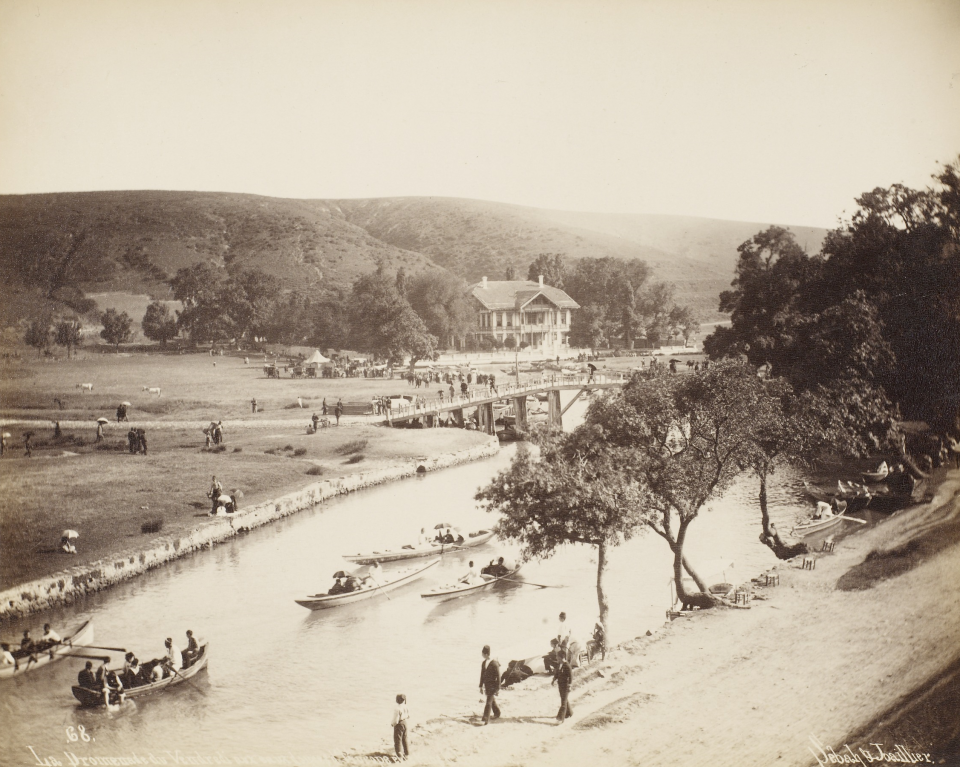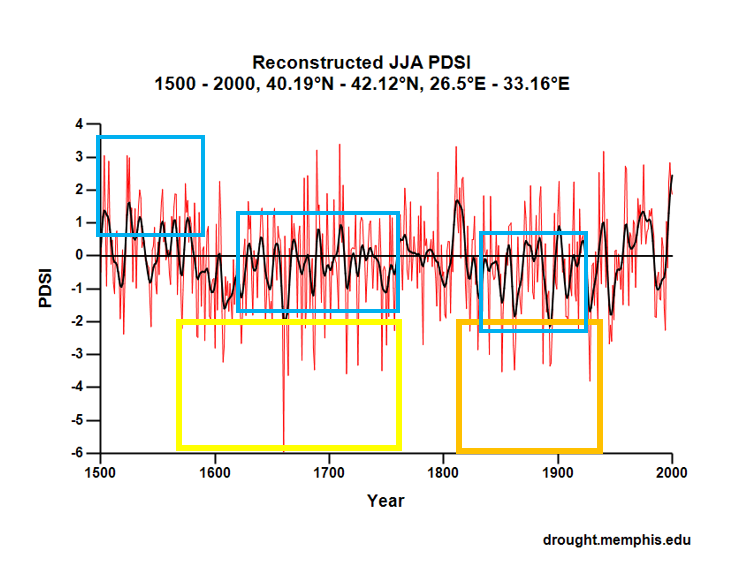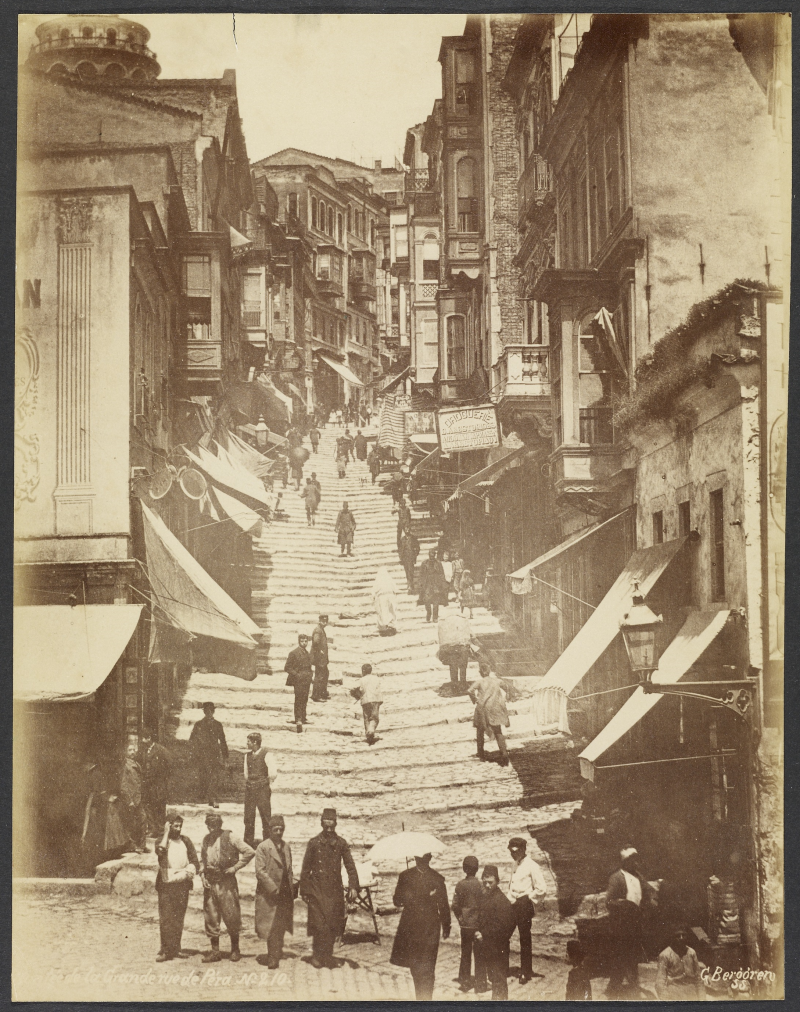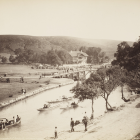Charles MacFarlane, the Scot known for his historical and travel writing, visited Istanbul in 1828. MacFarlane, who suffered for years from “fever of Constantinople” (Brucella) after his visit, mentions how he could not understand why previous observers had described the city’s climate as “pure and healthy”:
together with the harbour (the Golden Horn) itself, and the stagnating waters of Kiat-hane, and we shall be convinced, that of all places in Europe, Constantinople must suffer most from marsh effluvia … Pera is singularly obnoxious to all inflammatory disorders. Strangers are sure to pay a tribute of sickness on their arrival, or shortly after … (MacFarlane 1828: 300–302)
Ottomanists Daniel Panzac and Nukhet Varlık also point to a “climate of epidemics” referring to other nineteenth-century accounts that showed disease as a boundary marker between Europe and the Orient. Indeed, the city experienced significant infectious disease outbreaks such as that of the plague in 1801, 1811–1812, 1831, 1853, and 1876, and seven cholera outbreaks in 1831, 1847, 1854, 1865, 1870, 1876–1877, and 1893.

Panorama of Constantinople in 1878, as seen from the Galata Tower. Click the photo two times for a full-scale version.
Panorama of Constantinople in 1878, as seen from the Galata Tower. Click the photo two times for a full-scale version.
Photograph by Guillaume Berggren (1835–1920), 1878.
Accessed via Wikimedia on 26 November 2020. Click here to view source.
 This work is licensed under a Creative Commons Public Domain Mark 1.0 License.
This work is licensed under a Creative Commons Public Domain Mark 1.0 License.
What changed? We know that, like other industrial city population movements, dense settlement and inadequate infrastructure worsened health conditions in Istanbul. The number of inhabitants rose from over five hundred thousand in 1856 to over eight hundred thousand in 1885. However, there was also another factor: climate change. The recent tree ring-based hydroclimate June/July precipitation reconstruction of the Old World Drought Atlas confirms a significant decrease in nineteenth-century precipitation values. The Palmer Drought Severity Index (PDSI), which indicates moderate drought (-2), severe drought (-3), and extreme drought (-4), shows that drought occurred more often; the mean PDSI diminished to minus one in nineteenth-century Istanbul.

Kağıthane Valley was originally a place where horses were brought for grazing. Its first mansion, Imrahor Köşkü, was built in the sixteenth century and in the seventeenth century, Sultan Murad IV built a Persian-style mansion and garden. In the eighteenth century, French-style mansions and gardens were also built and the valley became popular for walks and parties. At the end of the creative period known as the Tulip Era (1718–1730), many mansions were destroyed in a riot and the valley was turned into a military training area. In the nineteenth century, Sultan Mahmud II rebuilt one of the mansions, in which he hosted ambassadors. Sultan Abdülaziz made frequent use of this mansion and in 1867 he made its garden a public place. In 1893, at the time around which this photograph was taken, Sultan Abdülhamid II added a great fountain. After the First World War, the garden and its mansions had once again turned into ruins. Jean Pascal Sébah, La promenade de vendredi aux Eaux douces d’Europe, c. 1884–1905.
Kağıthane Valley was originally a place where horses were brought for grazing. Its first mansion, Imrahor Köşkü, was built in the sixteenth century and in the seventeenth century, Sultan Murad IV built a Persian-style mansion and garden. In the eighteenth century, French-style mansions and gardens were also built and the valley became popular for walks and parties. At the end of the creative period known as the Tulip Era (1718–1730), many mansions were destroyed in a riot and the valley was turned into a military training area. In the nineteenth century, Sultan Mahmud II rebuilt one of the mansions, in which he hosted ambassadors. Sultan Abdülaziz made frequent use of this mansion and in 1867 he made its garden a public place. In 1893, at the time around which this photograph was taken, Sultan Abdülhamid II added a great fountain. After the First World War, the garden and its mansions had once again turned into ruins. Jean Pascal Sébah, La promenade de vendredi aux Eaux douces d’Europe, c. 1884–1905.
Photograph by Jean Pascal Sébah (1872–1947), c. 1884–1905.
Digital image courtesy of the Getty’s Open Content Program. Click here to view source.
 This work is licensed under a Creative Commons Public Domain Mark 1.0 License.
This work is licensed under a Creative Commons Public Domain Mark 1.0 License.
Drought worsened living conditions. It turned rivers into marshland and decreased available water sources for turning water mills used for irrigation and cleaning. Waterborne diseases such as diarrhoea and cholera increased. Excessive heat, swamps, and deforestation triggered the spread of vector-borne diseases such as malaria. Moreover, water scarcity worsened sanitary conditions. Diseases that are transmitted from animals to human beings through direct or indirect contact by contaminated food (often milk products), like Brucella (fever of Constantinople, Malta fever, or Mediterranean fever), also increased.

The recent tree ring-based hydroclimate June/July reconstruction of the Old World Drought Atlas (OWDA) over 500 years. The diagram shows the regional difference in the effects of weather extremes. Extreme droughts are considered as years having a PDSI value of -2 or less and extremely high precipitation is considered as years having a PDSI value over 2. Extreme summer droughts for the first period are shown in yellow and the second period is shown in orange. Blue shows the state of mean PDSI values.
The recent tree ring-based hydroclimate June/July reconstruction of the Old World Drought Atlas (OWDA) over 500 years. The diagram shows the regional difference in the effects of weather extremes. Extreme droughts are considered as years having a PDSI value of -2 or less and extremely high precipitation is considered as years having a PDSI value over 2. Extreme summer droughts for the first period are shown in yellow and the second period is shown in orange. Blue shows the state of mean PDSI values.
Diagram created by Özlem Sert, 2020.
The copyright holder reserves, or holds for their own use, all the rights provided by copyright law, such as distribution, performance, and creation of derivative works.
The stress on the economy was also enormous. Excessive heat affected load-bearing animals and people, making transportation more difficult. Recurrent epizootics reduced the availability of animal power. Extremely hot conditions increased the stress on seafaring oarsmen. A lack of sufficient charcoal and firewood resulted in ships being fuelled with coal from England, which was costly. Problems of transporting wood and the cumulative long-term effects of deforestation made firewood supplies an enormous issue. The Ottoman state set prices and imposed mandatory labour on rural regions, which absorbed the burden of providing food, firewood, charcoal, and construction material to Istanbul and the city’s palace. Charcoal, which had previously been supplied as taxes from villages in some Balkan countries after the Russian War, was not available. As a consequence, charcoal prices rose from 3.8 Akçes in 1829 to 13.6 Akçes in 1830. In the second half of the century, numerous fires, some of which coincided with scorching temperatures, increased timber demand and prices multiplied.

Yüksek Kaldırım is a cosmopolite street that connects the port to Galata and Pera. The names of the shops are written in Ottoman, Greek, and Armenian. Guillaume Berggren, Entreé de la grande rue de Péra, 1870s.
Yüksek Kaldırım is a cosmopolite street that connects the port to Galata and Pera. The names of the shops are written in Ottoman, Greek, and Armenian. Guillaume Berggren, Entreé de la grande rue de Péra, 1870s.
Photograph by Guillaume Berggren (1835–1920), 1870s.
Courtesy of Getty Research Institute. Click here to view source.
 This work is licensed under a Creative Commons Public Domain Mark 1.0 License.
This work is licensed under a Creative Commons Public Domain Mark 1.0 License.
The state took measures against this severe firewood shortage. Necessary institutional action was taken. Laws were changed to regulate the organization of forests under the General Directorate of Forests founded in August 1840. And silviculture was established. Once supply from the Balkans was no longer forthcoming, the stress on regional supplies increased. The demand for timber from Kocaeli, a neighbouring district located east of Istanbul, was almost four times higher. Nearly two-thirds of forests were cleared by 1847. Life became desolate for villagers; some even sold their buffaloes to relieve themselves of the burden to supply wood. Until Ottoman coal began to arrive from Zonguldak on the Black Sea in 1850, Istanbul’s firewood and coal supply was a significant problem.
Firewood and water scarcity increased the cost of public baths, which were essential for the well-being and health of inhabitants. The number of public baths did not increase in line with the doubling of Istanbul’s population. Poor sanitary conditions magnified the spread of diseases. These in turn resulted in a declining workforce, higher transportation costs, and higher food and firewood prices, and further raised the cost of public baths. Poorer sanitation presented a convenient environment for diseases to spread. For example, during the 1811–1812 plague, ship crews carrying firewood and charcoal as well as food to Istanbul fled the city. This increased labour and transportation costs. Some public baths, whose furnaces were heated with charcoal and firewood, went bankrupt.
Disease, a declining workforce, higher firewood and food prices, and decreasing sanitary conditions became interrelated, desperate cries caused by extreme temperatures in nineteenth-century Istanbul. The first municipal institution (Şehremaneti), founded in 1868, was given the urgent mandate of ensuring public hygiene. The effect of climate change on the landscape, economy, and institutional changes was significant. Indeed, climate is an important factor to consider for the history of the era. Disease was not only a result of Orientalist discourse. Environmental conditions also changed Istanbul’s healthscape. Thus, unbeknownst to Charles MacFarlane, the discrepancy between the earlier accounts of Istanbul and his own experiences can, at least partly, be ascribed to climate change.
How to cite
Sert, Özlem. “Water, Firewood, and Disease in Nineteenth-Century Istanbul.” Environment & Society Portal, Arcadia (Autumn 2020), no. 45. Rachel Carson Center for Environment and Society. https://doi.org/10.5282/rcc/9158.
ISSN 2199-3408
Environment & Society Portal, Arcadia
 This work is licensed under a Creative Commons Attribution 4.0 International License.
This work is licensed under a Creative Commons Attribution 4.0 International License.
2020 Özlem Sert
This refers only to the text and does not include any image rights.
Please click on the images to view their individual rights status.
- Dinçkal, Noyan. Istanbul und das Wasser : Zur Geschichte der Wasserversorgung und Abwasserentsorgung von der Mitte des 19. Jahrhunderts bis 1966 [Istanbul and the water: On the wistory of water supply and sewage disposal from the mid-nineteenth century to 1966]. Munich: R. Oldenbourg, 2004.
- MacFarlane, Charles. Constantinople in 1828, A Residence of Sixteen Months in the Turkish Capital and Provinces; With an Account of the Present State of the Naval and Military Power, and of the Resources of the Ottoman Empire. London: Saunders and Otley, 1829.
- Öztel, Muharrem. “İstanbul'un Temel İhtiyaçlarından Mahrukâtın (odun ve kömür) Önemi ve Mahrukât Arz Piyasası (1789–1918)” [One of the Basic Needs of Istanbul (1789–1918): The Market of Fuel (Firewood and Coal)]. Turkish Studies 8, no. 7 (2013): 487–505. doi:10.7827/TurkishStudies.5044.
- Panzac, Daniel. “Health Politics and Border Setting: The Ottoman Example, 18th and 19th Centuries.” Turcica 31 (1999): 87–108.
- Varlık, Nükhet. “‘Oriental Plague’ or Epidemiological Orientalism.” In Plague and Contagion in the Islamic Mediterranean, edited by Nükhet Varlık, 57–87. Newark: Rutgers University Press, 2017.
- Yıldırım, Nuran. A History of Healthcare in Istanbul: Health Organizations, Epidemics, Infections and Disease Control, Preventive Health Institutions, Hospitals, Medical Education. Istanbul: İstanbul Üniversitesi & Istanbul 2010 European Capital of Culture Agency, 2010.








